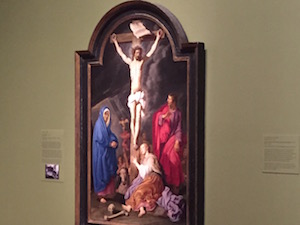 Today, we had a cultural outing at the VMFA. We were split up into two groups, those who have been there before and those who have not been. My PAL, Shirley and I have both been to VMFA, so we went with the group that would get a more in-depth view of artistic style over the centuries. It was fascinating because the concept of art is organic, it continues to change over time; however, the concept of ageism is still present in art. Even the tour guide said that those who are older do not appreciate modern day or 20th century art because it isn’t “real.” It is interesting how ageist stereotypes even exist in art.
Today, we had a cultural outing at the VMFA. We were split up into two groups, those who have been there before and those who have not been. My PAL, Shirley and I have both been to VMFA, so we went with the group that would get a more in-depth view of artistic style over the centuries. It was fascinating because the concept of art is organic, it continues to change over time; however, the concept of ageism is still present in art. Even the tour guide said that those who are older do not appreciate modern day or 20th century art because it isn’t “real.” It is interesting how ageist stereotypes even exist in art.
The tour guide gave excellent insight on how art has evolved ofrom the 1500’s up until today. Techniques such as bright colors, size of the main object, and darkness remained the same between all of the photos in order to draw your eyes to certain points in the painting. Artistic style changed over the centuries in regards to depth of paintings, the focus, and the type of painting. My PAL and I noticed many of these aspects, but we both agreed that we needed more time than a one hour tour to truly notice and appreciate art. Both of us agreed that there was something about “older art” that is astounding and there is nothing like it. In regards to modern art, we both don’t understand it as much as we do with “older art,” but we agree that it all depends on the person and what their perception of “art” is. We both loved being at the VMFA and hope that there can be more time to appreciate all the pieces, both old and new.
Allyson Batoy, graduate student in Pharmacy


